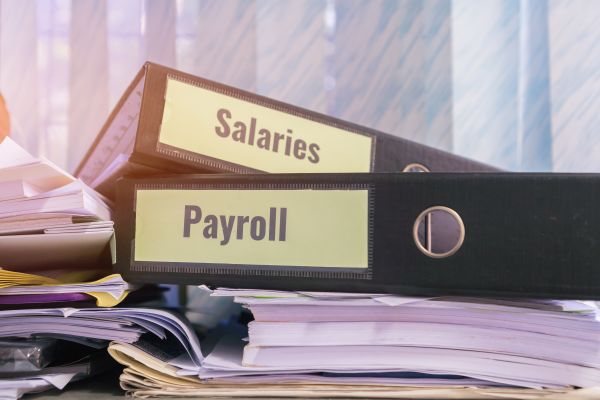In line with existing legislation, a number of superannuation changes are coming into effect that will apply to both employees and employers.
Two specific changes that will affect employees most are:
- The rate of super guarantee contributions from employers will increase to 10.5%.
- The $450 eligibility threshold for super will be removed.
What does this mean for your future retirement savings?
Super guarantee lifts to 10.5%
From the new financial year, the super guarantee (SG) rate will increase from 10% to 10.5% for employees.
For employees on award wages or enterprise agreements, superannuation is paid on top of their wage. If an employee who is paid $90,000 plus super received $9,000 into their super contributions, under the new rate rise they will be paid $9,450.
However, for employees on contracts who receive super as part of their salary, the 0.5% will be take from their salary. This means their annual wage will decrease.
The Australian Retirement Trust Education Manager, Josh van Gestel, explains the importance of considering how your employer will fund this new rate increase:
“Some employers may pay this additional amount on top of the other salary increases or bonuses they may provide to you, while some other employers may instead pay you for this increase in SG by reducing your current salary or any future salary increases or bonuses they would have otherwise paid to you.”
“If you’re also making personal pre-tax contributions to your super, including salary sacrifice contributions or amounts you claim as a tax deduction, just make sure the increase in what your employer pays doesn’t tip you over the annual concession limit of $27,500 that applies to how much you can contribute each year.”
This isn’t the last expected SG rate rise we will see as the Federal Government has mandated a 0.5% rate increase every financial year until it reaches 12% in 2025.
More employees eligible for super as the $450 threshold is ditched
The $450 threshold for super is also going to be scrapped.
For the first time from 1 July, it is estimated more than 300,000 Australians (mostly young) will be eligible to receive SG payments. this means many low-income workers with part-time or casual jobs will now be entitled to the same benefits as their higher-earning counterparts.
Under the new changes, anyone earning less than $450 per month before tax will receive the new 10.5% contribution regardless of how little they earn. The one exception is if the employee is under the age of 18 – they must work for at least 30 hours per week to be eligible for super payments.
How to get started if you’ve never received super before
Those who are new to superannuation are recommended to do some research and find a super fund that best suits their needs now and in the long run. After all, you want to ensure that the fund you entrust with your savings ticks all the relevant boxes.
There are three key things to weigh up when selecting the right fund for you:
- Take a look at the tangible numbers such as fees and costs – make sure to compare fees and costs, remembering that these are deducted from your account balance and can deplete your savings over time. There is also the matter of insurance, make sure you are getting the cover you need at a reasonable cost that you can justify.
- Consider the services and benefits on offer – you want to make the most of your membership. See what you can access and the functionality you get, what rewards and discounts a membership can let you access, and the support you can receive.
- Think about what type of fund you’re after – consider if the fund you’re with or looking to join is a profit-for-members fund, a retail fund that may be offered through a bank or other financial institutions, or if you consider doing it all yourself through a self-managed super fund.
Work test requirements for older Australians scrapped
Older Australians aged between 67-74 will be able to top up their super without having to undergo a work test, provided their super balance is less than $1.7 million in July 2022.
This change allows older super members to continue to build their retirement balances.
Cut off age for non-concessional contributions rises
Older super members who wish to make non-concessional contributions into their super account has increased from 67 to 75 years of age.
This means that people aged up to 74 can make a considerable contribution into their account – $110,000 per year or $330,000 over three years. One important thing to remember is that this only qualifies for those members who have less than $1.48 million in their super.
Buying your first home with super
If you’re thinking about using your super savings to buy your first home, there are important changes that have occurred from 1 July 2022.
An individual can make personal contributions of up to $15,000 a year into their super, and up to an overall maximum of $50,000 that they can later withdraw to put towards the purchase of their first home. This is an increase from an overall maximum of $30,000 which applied prior to 30 June 2022.
By saving through super, you can actually save on tax which you can put towards your dream home.
New financial year resolutions to make
As we head into the new financial year, it’s time to do a quick check on your super to see how it’s tracking and whether any relevant changes need to be made.
Mr. van Gestel recommends doing the following tasks:
- Engage with your fund – get your online access sorted.
- Consider whether you should bring your super funds together (if you have more than one).
- Check your investments – your super is an investment so make sure it’s performing as it should be.
- Consider adding personal contributions if you can.
- Make sure your insurance and beneficiary nominations are correct.
- Reach out to your super fund if you ever need assistance or guidance.\
For more information on super funds and self-managed super funds, contact us today.












